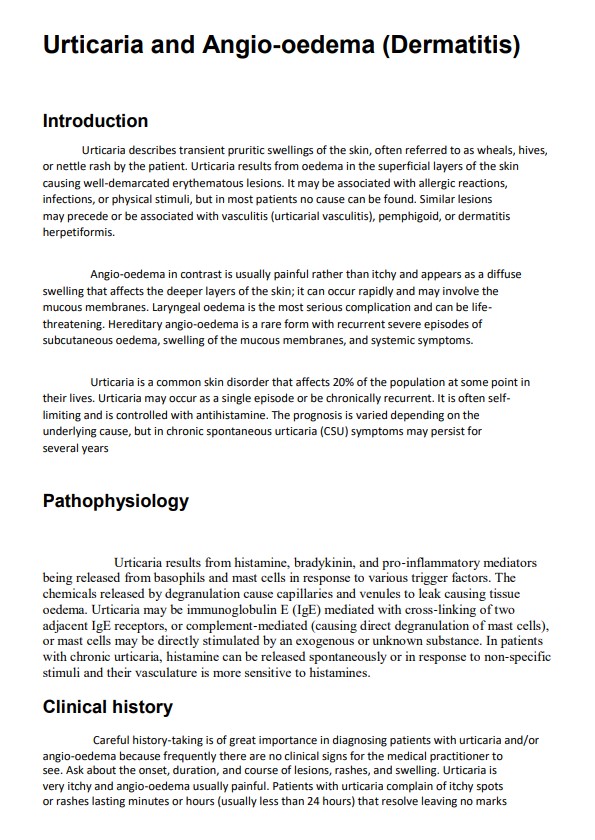Urticaria and Angio-oedema (Dermatitis)
Summary:
This note provides a comprehensive overview of urticaria and angio-oedema, commonly known as dermatitis. The note starts by introducing the topic and explaining the pathophysiology behind it. It also describes the clinical history of the condition and provides a classification of urticaria. The causes of both non-physical and physical urticaria are then outlined.
The different types of urticaria are also discussed, including ordinary urticaria, cholinergic urticaria, solar urticaria, and pressure urticaria. The note then goes on to cover angio-oedema, which is closely related to urticaria, and provides information on general investigations and management of these conditions.
Overall, this note serves as a useful resource for anyone seeking a comprehensive understanding of urticaria and angio-oedema, from the pathophysiology behind the condition to the various types of urticaria and general management options available.
Excerpt:
Urticaria and Angio‐oedema (Dermatitis)
Introduction
Urticaria describes transient pruritic swellings of the skin, often referred to as wheals, hives,
or nettle rash by the patient. Urticaria results from oedema in the superficial layers of the skin
causing well‐demarcated erythematous lesions. It may be associated with allergic reactions,
infections, or physical stimuli, but in most patients no cause can be found. Similar lesions
may precede or be associated with vasculitis (urticarial vasculitis), pemphigoid, or dermatitis
herpetiformis.
Angio‐oedema in contrast is usually painful rather than itchy and appears as a diffuse
swelling that affects the deeper layers of the skin; it can occur rapidly and may involve the
mucous membranes. Laryngeal oedema is the most serious complication and can be life‐
threatening. Hereditary angio‐oedema is a rare form with recurrent severe episodes of
subcutaneous oedema, swelling of the mucous membranes, and systemic symptoms.
Urticaria is a common skin disorder that affects 20% of the population at some point in
their lives. Urticaria may occur as a single episode or be chronically recurrent. It is often self‐
limiting and is controlled with antihistamine. The prognosis is varied depending on the
underlying cause, but in chronic spontaneous urticaria (CSU) symptoms may persist for
several years


Reviews